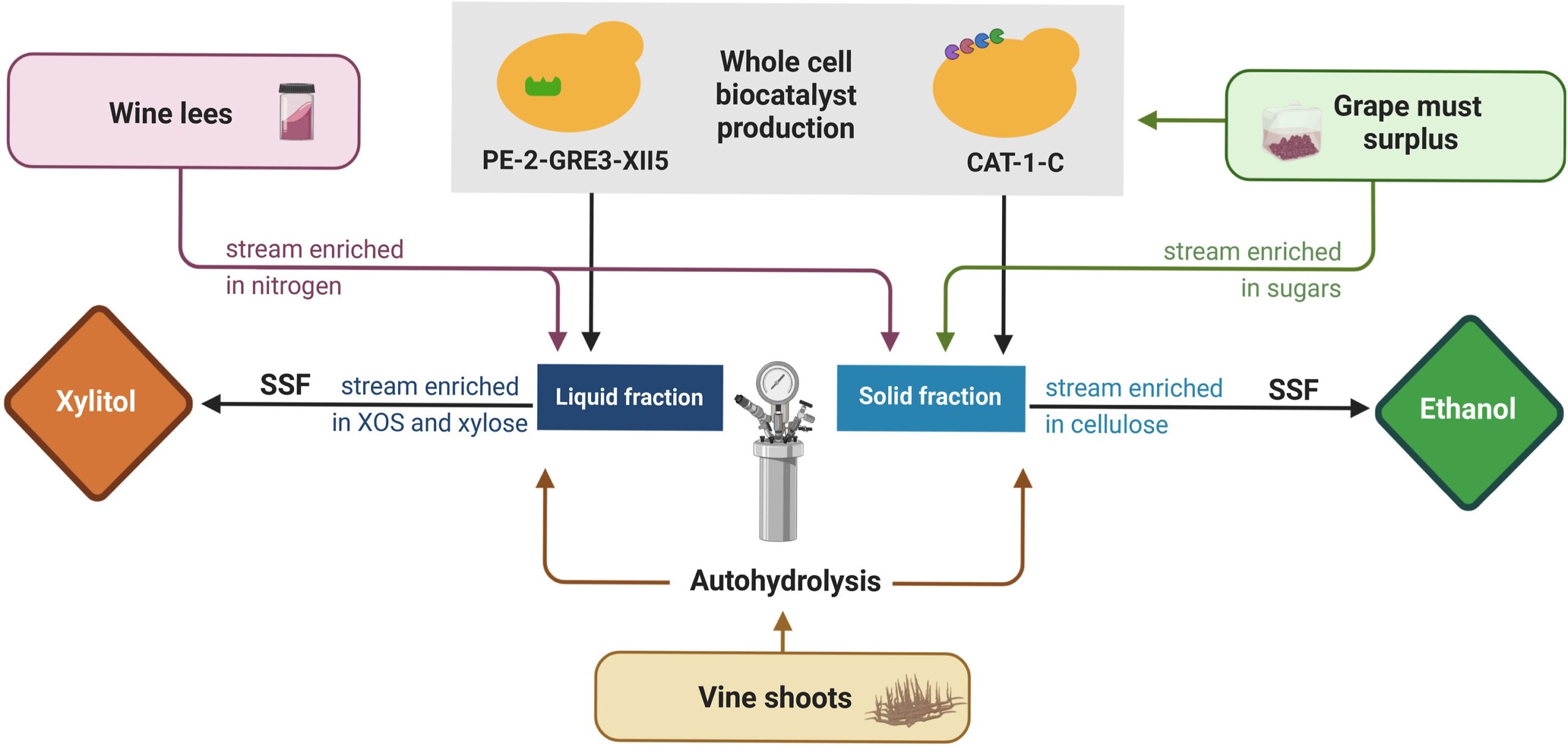
Baptista SL, Romaní A, Cunha JT, Domingues L (2022) Multi-feedstock biorefinery concept: Valorization of winery wastes by engineered yeast. Multi-feedstock biorefinery concept: Valorization of winery wastes by engineered yeast. Journal of Environmental Management 326, 116623. https://doi.org/10.1016/j.jenvman.2022.116623.
Abstract: The wine industry produces significant amounts of by-products and residues that are not properly managed, posing an environmental problem. Grape must surplus, vine shoots, and wine lees have the potential to be used as renewable resources for the production of energy and chemicals. Metabolic engineering efforts have established Saccharomyces cerevisiae as an efficient microbial cell factory for biorefineries. Current biorefineries designed for producing multiple products often rely on just one feedstock, but the bioeconomy would clearly benefit if these biorefineries could efficiently convert multiple feedstocks. Moreover, to reduce the environmental impact of fossil fuel consumption and maximize production economics, a biorefinery should be capable to supplement the manufacture of biofuel with the production of high-value products. This study proposes an integrated approach for the valorization of diverse wastes resulting from winemaking processes through the biosynthesis of xylitol and ethanol. Using genetically modified S. cerevisiae strains, the xylose-rich hemicellulosic fraction of hydrothermally pretreated vine shoots was converted into xylitol, and the cellulosic fraction was used to produce bioethanol. In addition, grape must, enriched in sugars, was efficiently used as a low-cost source for yeast propagation. The production of xylitol was optimized, in a Simultaneous Saccharification and Fermentation process configuration, by adjusting the inoculum size and enzyme loading. Furthermore, a yeast strain displaying cellulases in the cell surface was applied for the production of bioethanol from the glucan-rich cellulosic. With the addition of grape must and/or wine lees, high ethanol concentrations were reached, which are crucial for the economic feasibility of distillation. This integrated multi-feedstock valorization provides a synergistic alternative for converting a range of winery wastes and by-products into biofuel and an added-value chemical while decreasing waste released to the environment.
Enlace al artículo en la revista (acceso abierto): https://doi.org/10.1016/j.jenvman.2022.116623.
*-*-*-*-*-*-*-*-
